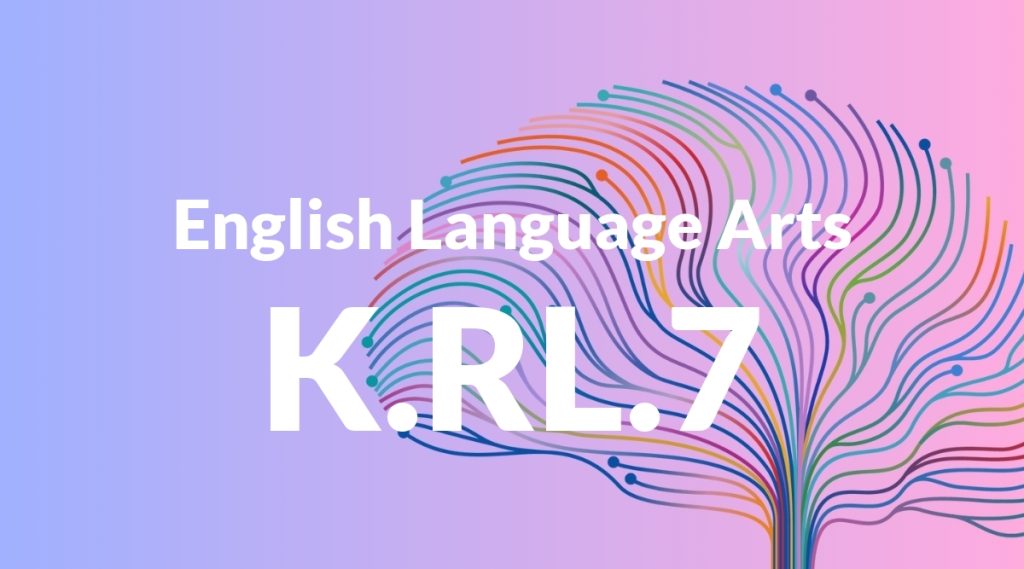Standard: K.RL.7 – With prompting and support, describe the relationship between illustrations and the story in which they appear (e.g., what moment in a story an illustration depicts).
Grade level: Kindergarten
Subject: English Language Arts
Domain: Reading: Literature
Teacher Overview
This standard focuses on helping students understand the relationship between illustrations and the story they accompany. Recognizing this relationship is crucial for developing comprehension skills and appreciating the interplay between visual and textual storytelling. Students should be able to recognize and describe basic elements in illustrations, such as characters, settings, and actions.
After mastering this standard, students will be better prepared to analyze how illustrations contribute to the overall meaning of a text, setting the stage for more complex literary analysis in later grades.
Common Misconception 1
Some students may believe that illustrations are merely decorative elements. This misconception overlooks the role of illustrations in enhancing understanding and providing additional context for the story.
Intervention 1
Use guided discussions and questioning techniques to help students explore how illustrations add meaning to the story. For example, ask questions like, ‘What can we learn from this picture that isn’t written in the words?’
Common Misconception 2
Another common misconception is that every illustration must exactly match the text on the same page. This can limit students’ ability to see how illustrations can provide foreshadowing or additional layers of meaning.
Intervention 2
Encourage students to look at illustrations as a way to predict what might happen next in the story or to understand the emotions and actions of characters that are not explicitly described in the text.
Prerequisite Knowledge
Students should have basic familiarity with picture books and the ability to recognize and describe simple objects and actions in illustrations.
Subsequent Knowledge
Students will develop the ability to analyze how illustrations contribute to the meaning of a text and enhance their comprehension skills by connecting visual and textual elements.
Instructional Activities
- Read a picture book aloud and pause to discuss each illustration’s role in the story.
- Have students draw a picture of their favorite part of a story and explain what is happening in their illustration.
- Use a storyboard template to map out key events in a story with corresponding illustrations.
- Create a matching game where students pair illustrations with the correct part of the text.




